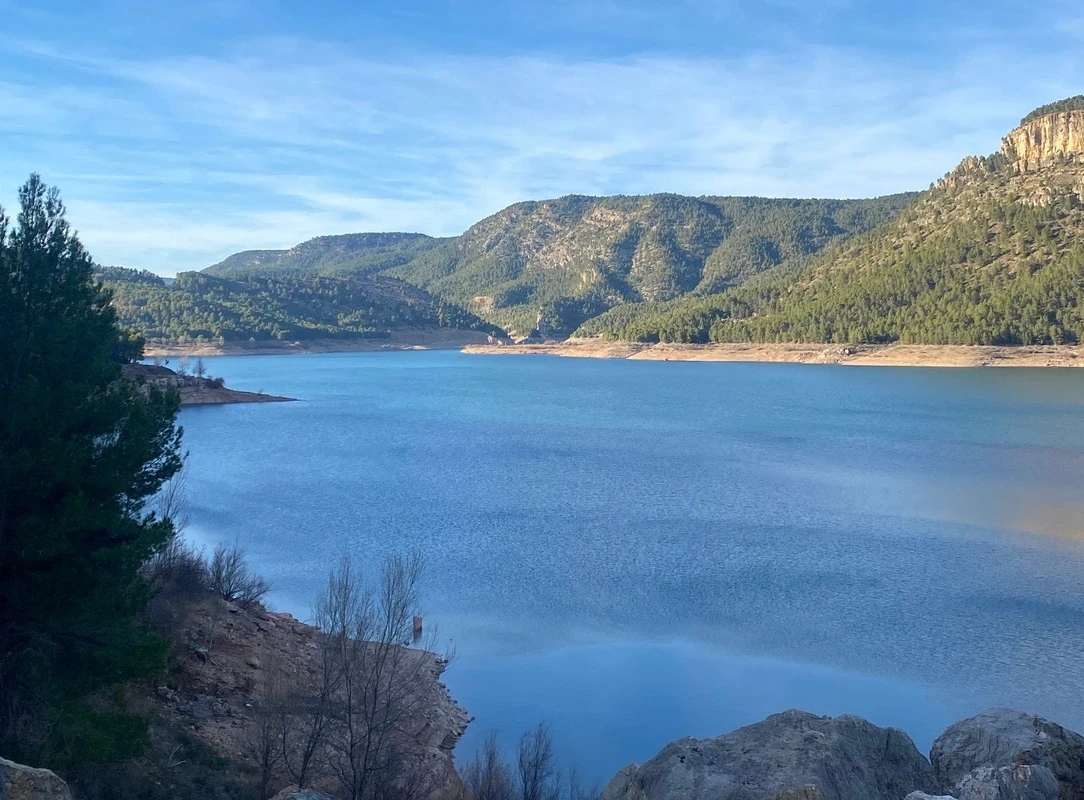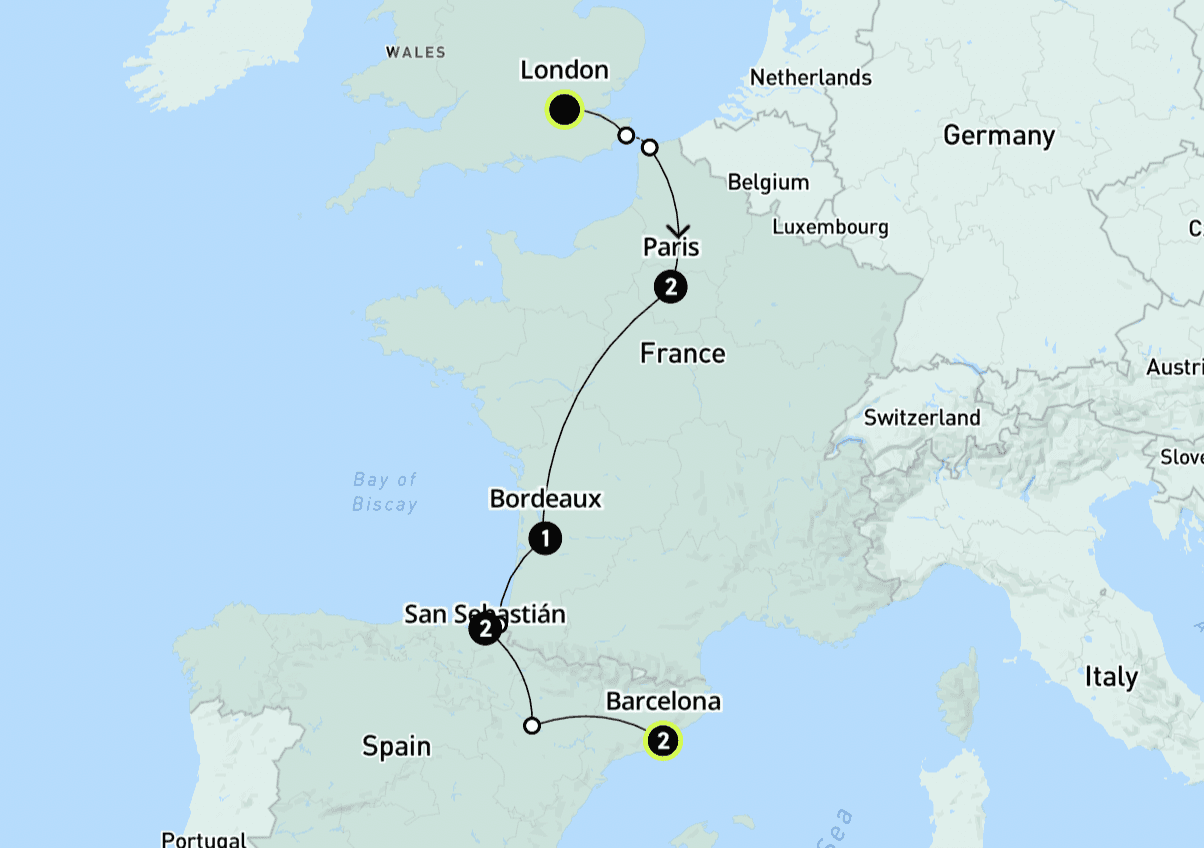Solo travel is booming, and Spain’s national parks are ideal for adventurers seeking solitude and stunning landscapes.
From the peaks of Picos de Europa to Doñana’s serene wetlands, Spain offers safety, accessibility, and diversity for solo travelers.
Explore the top parks, essential tips, and how Spain’s parks are perfect for solo journeys.
Dive in and start planning your solo adventure today!

Solo travel is no longer a niche trend—it’s a lifestyle embraced by adventurers seeking freedom, self-discovery, and deeper connections with the world around them. Spain, with its rich tapestry of landscapes and accessible national parks, has emerged as a top destination for solo travelers. From the rugged peaks of Picos de Europa to the volcanic terrains of Teide, these natural havens offer the perfect blend of solitude and adventure.
But what’s driving this surge in solo travel? For some, it’s the chance to escape the noise of everyday life. For others, it’s the allure of exploring at one’s own pace, without compromise. Spain’s national parks not only cater to these desires but also provide a safe and well-structured environment for solo adventurers of all experience levels.
In this article, we delve into the rising popularity of solo travel in Spain’s national parks, uncovering who these travelers are, their favorite destinations, the challenges they face, and how Spain’s parks are adapting to meet their needs.

Who Travels Solo: Demographics of Solo Adventurers
Solo travel in Spain’s national parks attracts a diverse range of people, each seeking unique experiences that align with their personal goals. The solo traveler demographic has expanded significantly in recent years, reflecting a shift in how people prioritize their leisure time and the kinds of adventures they pursue. Understanding who these travelers are provides insights into the growing appeal of Spain's natural treasures.
Age and Gender Insights
Millennials and Gen Z dominate the solo travel space, often drawn to the opportunity for self-discovery and the chance to share breathtaking moments on social media. Platforms like Instagram and TikTok feature Spain’s national parks as trending destinations, showcasing stunning vistas, tranquil hiking trails, and wildlife encounters that resonate with younger audiences.
At the same time, retirees and empty-nesters are becoming a more prominent segment of solo travelers. For these individuals, solo travel offers a chance to explore at a slower, more contemplative pace. Many find solace in Spain’s accessible parks, which provide well-marked trails and resources that ease navigation, even for those with limited solo travel experience.
Solo Travel Goals
For many solo adventurers, the journey is about much more than sightseeing. Personal growth and a deeper connection with nature are top motivators. Solo travelers often describe their experiences in Spain’s national parks as transformative, offering a rare combination of solitude and immersion in the natural world. Unlike group travel, going solo allows them to set their own pace, indulge in moments of reflection, and focus on their interests without compromise.
Another common goal is the opportunity to disconnect from technology and fast-paced modern life. Spain’s parks, with their serene landscapes and lack of crowds in many areas, serve as ideal locations to recharge mentally and emotionally. This makes them especially attractive to professionals seeking a break from high-stress careers.
Activity Preferences
The activities solo travelers choose vary widely, but some clear trends emerge. Hiking ranks as the most popular activity, thanks to Spain’s diverse trail options that cater to all fitness levels. Whether it’s scaling the peaks of Picos de Europa or wandering through the wetlands of Doñana, solo hikers find both challenge and reward in these environments.
Wildlife spotting is another favorite, particularly in parks like Monfragüe, known for its raptors, and Doñana, famous for its migratory bird populations. For photographers, traveling solo offers the freedom to linger in scenic spots, waiting for the perfect light or wildlife shot without the pressure of a group schedule.

Embarking on the Camino de Santiago solo allows for personal reflection amidst Spain's breathtaking landscapes.
Top Destinations in Spain for Solo Nature Enthusiasts
Spain’s national parks offer an unparalleled variety of landscapes, from snow-capped peaks to sunlit wetlands and volcanic craters. Solo travelers are spoiled for choice, as each park delivers unique experiences tailored to those seeking solitude, adventure, or a mix of both. Here are the top destinations that stand out for their accessibility, beauty, and activities ideal for solo adventurers.
Picos de Europa National Park
Nestled in northern Spain, Picos de Europa is a hiker’s paradise with its dramatic limestone peaks, lush valleys, and ancient forests. Solo travelers are drawn to the park for its well-marked trails, which range from easy walks to challenging climbs.
What makes it ideal: The park is highly accessible by public transport, and its network of trails includes refuges for overnight stays, perfect for solo hikers who want to extend their journey.
Unique activities: The Covadonga Lakes offer serene spots for reflection, while wildlife enthusiasts can spot chamois, wolves, and even brown bears in the area.
Safety for solo adventurers: Popular trails see regular foot traffic, providing a balance between solitude and the comfort of knowing help is nearby if needed.
Doñana National Park
Famous for its sprawling wetlands and biodiversity, Doñana is a top pick for solo travelers interested in wildlife and peaceful landscapes. Located in southern Spain, this UNESCO World Heritage Site is particularly appealing to birdwatchers and nature photographers.
What makes it ideal: Guided tours are available, making it easy for solo travelers to explore areas that might otherwise be difficult to navigate.
Unique activities: Birdwatching is the highlight, with sightings of flamingos, Spanish imperial eagles, and other rare species. The nearby village of El Rocío offers cultural experiences and charming accommodations.
Accessibility: The park is well-connected to Seville and Huelva, making it an easy day trip or overnight destination for those traveling alone.
Teide National Park
Located on the island of Tenerife in the Canary Islands, Teide National Park is a wonderland of volcanic landscapes and surreal vistas. Its otherworldly terrain and excellent infrastructure make it a favorite for solo travelers who enjoy stargazing, hiking, and photography.
What makes it ideal: The park’s centerpiece, Mount Teide, is Spain’s highest peak and can be explored independently or via guided tours. A cable car offers an easy way to access breathtaking views.
Unique activities: Stargazing is world-class, thanks to the park’s designation as a Starlight Reserve. Solo adventurers can also enjoy the Mars-like Roques de García rock formations.
Safety for solo adventurers: The park’s popularity ensures a steady presence of other travelers, providing a sense of security without overcrowding.

Hidden Gems for Solo Travelers
While the big names draw significant attention, smaller parks like Aigüestortes i Estany de Sant Maurici or Monfragüe offer equally rewarding experiences. These parks are less crowded, making them perfect for solo adventurers seeking tranquility and authentic connections with nature.
Aigüestortes i Estany de Sant Maurici: A haven for pristine alpine lakes and stunning mountain backdrops, ideal for reflective solo hikes.
Monfragüe: A hotspot for birdwatching, especially for solo travelers eager to spot griffon vultures and eagles in a serene setting.
For an in-depth look at the top hiking trails to explore on your solo adventure, check out our 15 Best Trails to Walk in Spain for an Unforgettable Hike.
Why Solo Travelers Choose Spain’s National Parks
Spain’s national parks stand out as ideal destinations for solo adventurers due to their unique combination of natural beauty, cultural richness, and accessibility. Whether you’re a first-time solo traveler or an experienced explorer, Spain offers an array of experiences that make traveling alone both rewarding and manageable. Here’s why these parks top the list for solo enthusiasts.
Diverse Landscapes for Every Type of Explorer
One of the most compelling reasons solo travelers are drawn to Spain is its incredible diversity of natural environments. Each national park offers a distinct landscape, allowing travelers to tailor their experiences based on their preferences.
Mountains and valleys: Parks like Picos de Europa provide rugged terrains for solo hikers seeking a challenge, complete with panoramic views and well-marked trails.
Coastal and wetland retreats: Doñana National Park offers serene wetlands and pristine beaches, ideal for solo travelers looking to relax or engage in birdwatching.
Volcanic wonders: Teide National Park’s surreal, Mars-like landscapes captivate those seeking something truly out of the ordinary.
This variety ensures that solo travelers can always find a destination that aligns with their personal travel goals.
Cultural Enrichment Beyond the Trails
Spain’s national parks are often located near towns and villages steeped in history, providing opportunities for solo adventurers to immerse themselves in local culture.
Charming nearby towns: Many parks, such as Doñana, are close to villages like El Rocío, where solo travelers can experience authentic Spanish traditions, from local festivals to regional cuisine.
Historic landmarks: Some parks, like Ordesa y Monte Perdido, are surrounded by ancient monasteries and archaeological sites, allowing for a blend of outdoor exploration and cultural discovery.
For solo travelers, this fusion of nature and culture adds depth to their journeys, transforming them into holistic travel experiences.
Accessibility and Infrastructure
Spain’s commitment to sustainable tourism and visitor satisfaction makes its national parks highly accessible, even for those venturing alone.
Well-maintained trails: Clearly marked routes in parks like Aigüestortes i Estany de Sant Maurici ensure that solo travelers can navigate confidently without requiring a guide.
Public transportation links: Many parks, including Sierra de Guadarrama, are easily accessible via buses or trains from major cities, eliminating the need for a car.
Solo-friendly amenities: Visitor centers, park maps, and multilingual staff make planning and executing a solo trip hassle-free.
This level of infrastructure not only enhances the solo travel experience but also provides peace of mind for those traveling independently.
Spain’s national parks offer much more than breathtaking scenery; they provide an environment where solo travelers can feel empowered and inspired. From the diversity of landscapes to the seamless blend of nature and culture, it’s easy to see why Spain has become a favorite for those traveling alone.

Challenges Faced by Solo Travelers in Spain
While Spain’s national parks offer incredible opportunities for solo adventurers, there are challenges that travelers may encounter along the way. Understanding and preparing for these obstacles can help solo explorers have a safer and more enjoyable experience.
Language Barriers
Although Spain is a popular tourist destination, English is not widely spoken in rural areas, including those near many national parks. Solo travelers may find it challenging to communicate with locals, especially in small villages or when seeking assistance.
Navigational issues: Trail signs and park information may only be available in Spanish, making it essential for travelers to familiarize themselves with basic Spanish phrases or download translation apps.
Local interactions: Ordering food, asking for directions, or engaging with park staff can sometimes require more effort without Spanish language skills.
Pro tip: Learn common phrases like "¿Dónde está el sendero?" ("Where is the trail?") and "¿Hay transporte público?" ("Is there public transport?") to ease communication.
Safety Concerns in Remote Areas
Solo travelers exploring remote trails or off-the-beaten-path areas can encounter safety risks such as getting lost, inclement weather, or unexpected wildlife encounters.
Trail navigation: While many parks have marked trails, solo hikers may still face challenges in less frequented areas, where signs or maps may not be as clear.
Weather unpredictability: Spain’s parks can experience sudden weather changes, from fog in Picos de Europa to heatwaves in Teide, posing risks for unprepared travelers.
Wildlife encounters: Although rare, wildlife like wild boars or snakes may pose a risk if travelers are unaware of proper safety measures.
Pro tip: Always inform someone about your planned route and carry safety essentials, such as a map, compass, and first-aid kit.
Logistical Difficulties
Reaching and navigating some of Spain’s national parks can pose logistical challenges, particularly for solo travelers without a car.
Limited public transport: Some parks, such as Monfragüe, may require multiple transfers or private transport, which can be daunting for solo visitors.
Accommodation scarcity: Finding solo-friendly accommodations near certain parks can be difficult, especially during peak travel seasons.
Pro tip: Research transport options in advance and consider staying in nearby towns with better amenities, even if it requires a short commute to the park.
Spain’s national parks remain an excellent choice for solo travelers, but these challenges highlight the importance of preparation. By addressing language barriers, prioritizing safety, and planning logistics in advance, solo adventurers can confidently overcome these obstacles and focus on enjoying their journey.

How Spain’s Parks Are Adapting for Solo Visitors
Spain’s national parks have recognized the growing trend of solo travel and are actively improving their offerings to cater to independent adventurers. From enhanced infrastructure to organized activities, these adaptations are making solo exploration safer, more accessible, and more enjoyable.
Improved Trail Signage and Navigation
Navigating a national park alone can be intimidating, but Spain’s parks are taking steps to ensure solo travelers feel confident on their journeys.
Clear trail markers: Parks like Sierra de Guadarrama and Aigüestortes i Estany de Sant Maurici have upgraded trail signage, including distance markers and difficulty levels.
Multilingual maps and guides: Visitor centers now offer resources in multiple languages, catering to international solo travelers who may not speak Spanish.
Digital tools: Some parks provide apps or QR codes for real-time navigation, ensuring solo travelers can easily find their way.
Pro tip: Download offline maps or use park-provided tools for extra security during your hike.
Visitor Centers as Hubs for Solo Travelers
Visitor centers in many parks now act as key support hubs, providing tailored services for solo travelers.
Information desks: Knowledgeable staff offer advice on solo-friendly trails, safety tips, and nearby accommodations.
Solo-specific resources: Some parks, like Picos de Europa, provide curated guides for individual travelers, highlighting the best spots for solitude or community interaction.
Emergency support: Centers are equipped to assist solo travelers in case of emergencies, offering quick response and communication support.
Pro tip: Begin your visit at the park’s main visitor center to gather valuable tips and insights specific to your journey.
Organized Activities for Solo Travelers
While many solo travelers prefer solitude, others enjoy opportunities to meet like-minded individuals. Spain’s parks now offer organized activities that create these connections while still respecting the independence of solo adventurers.
Guided hikes: Parks like Doñana and Ordesa y Monte Perdido provide group hikes, where solo travelers can explore safely while enjoying social interaction.
Workshops and talks: Wildlife observation sessions or photography workshops offer structured opportunities to engage with others.
Meetup programs: Some parks partner with local organizations to host meetups, allowing solo travelers to connect before or during their visit.
Pro tip: Check park websites or social media channels for schedules of guided activities and workshops.
Spain’s efforts to enhance its national parks for solo travelers highlight its commitment to sustainable tourism and visitor satisfaction. These adaptations make solo travel more accessible, ensuring that adventurers of all experience levels can confidently explore the country’s natural wonders.

Beyond its stunning landscapes, Mallorca offers incredible culinary experiences—explore our Mallorca 2025: My Secret Travel Tips for top restaurant recommendations and local delicacies you can’t miss.
Survey Insights: What Solo Travelers Look for in National Parks
To better understand the needs and preferences of solo travelers, insights from recent surveys and traveler feedback provide a glimpse into what draws adventurers to Spain’s national parks. Safety, solitude, and meaningful experiences are among the top priorities, shaping the way parks evolve to meet these expectations.
Safety First: The Top Concern for Solo Travelers
Safety consistently ranks as the most important factor for solo travelers when choosing a destination, and Spain’s national parks excel in creating a secure environment.
Well-marked trails: Clear signage and detailed maps reduce the risk of getting lost, a common concern for solo hikers.
Emergency access: Many parks have helplines and ranger stations that are easily accessible in case of emergencies.
Social safety: Spain’s reputation as a safe country for travelers reassures solo adventurers exploring its parks.
Traveler Tip: Check park websites for safety resources and consider downloading emergency numbers before your trip.
Solitude and Serenity: Escaping the Everyday
Solo travelers often seek an escape from the hustle and bustle of daily life, and Spain’s national parks deliver on this desire for peace and tranquility.
Quiet trails: Parks like Monfragüe and Aigüestortes i Estany de Sant Maurici feature less crowded paths, ideal for those seeking solitude.
Nature immersion: The serene landscapes allow travelers to reflect and recharge, making solo travel a therapeutic experience.
Seasonal advantages: Off-peak visits offer the added benefit of fewer crowds, enhancing the sense of isolation many solo adventurers crave.
Traveler Tip: Plan visits during weekdays or shoulder seasons for the most peaceful experiences.
Meaningful Activities: Making the Most of the Journey
Solo travelers prioritize activities that provide a mix of personal growth and connection with nature. Spain’s parks cater to these preferences through diverse opportunities.
Wildlife observation: Doñana and Monfragüe parks offer unparalleled birdwatching experiences, perfect for solo travelers who enjoy patient, quiet activities.
Photography: The dramatic landscapes of Teide and Picos de Europa are a haven for photographers seeking the perfect shot.
Learning opportunities: Guided tours, local history talks, and workshops in parks enrich the solo travel experience.
Traveler Tip: Join a nature tour or photography workshop to deepen your understanding of the environment while meeting like-minded individuals.
For those seeking a solo pilgrimage with coastal scenery, our 5 Days on El Camino del Norte: A Christmas Pilgrimage provides insights into this rewarding journey.
Spain’s national parks consistently align with the values and expectations of solo travelers, offering a mix of safety, solitude, and enriching activities. As more people embrace the freedom of traveling alone, these parks continue to adapt to ensure every visitor feels welcomed and inspired.

Safety Tips Solo Travelers Swear By
Safety is a top priority for solo travelers, especially in the vast and sometimes remote landscapes of Spain’s national parks. Whether navigating rugged trails or simply preparing for unforeseen circumstances, having a solid safety plan ensures a stress-free and enjoyable experience. Here are essential tips that experienced solo travelers recommend.
Preparation is Key
Proper preparation before setting out on a solo adventure can make all the difference in ensuring a safe journey.
Research your destination: Familiarize yourself with the park’s layout, trail maps, and weather conditions. Check for any alerts or closures on the park’s official website.
Inform someone of your plans: Share your itinerary, including your planned routes and expected return time, with a trusted friend or family member.
Pack smart: Carry a well-stocked backpack with essentials like a first-aid kit, snacks, water, a flashlight, and a portable phone charger.
Traveler Tip: Include a whistle or other signaling device for emergencies, especially in remote areas.
Stay Aware on the Trail
Once in the park, staying alert and aware of your surroundings is crucial for your safety as a solo traveler.
Stick to marked trails: Venturing off-trail can lead to getting lost or encountering dangerous terrain. Parks like Picos de Europa and Ordesa y Monte Perdido have extensive networks of well-marked routes for solo hikers.
Monitor weather changes: Conditions can shift rapidly, especially in mountainous regions like Teide. Always be prepared for sudden rain, fog, or temperature drops.
Wildlife precautions: Avoid approaching animals, and keep a safe distance from species like wild boars. Carrying a bear bell or similar deterrent can help avoid startling wildlife.
Traveler Tip: Check the weather forecast on the morning of your hike and adjust your plans accordingly.
Equip Yourself with the Right Tools
Technology and preparation go hand in hand for staying safe in Spain’s national parks.
Download offline maps: Apps like Maps.me or AllTrails allow you to navigate even when mobile signals are weak or nonexistent.
Carry emergency contacts: Save the park’s emergency helpline and ranger station number in your phone and on a physical card.
Wear appropriate gear: Invest in sturdy hiking boots, weather-appropriate clothing, and a comfortable backpack to ensure a safe and comfortable trek.
Traveler Tip: Many parks have downloadable trail maps on their websites—save these on your phone before your visit.
By following these safety tips, solo travelers can confidently explore Spain’s national parks while minimizing risks. Preparation, awareness, and the right tools ensure that your journey is as safe as it is rewarding.
What the Future Holds for Solo Travel in Spain
Solo travel to Spain’s national parks is more than a growing trend—it’s a testament to the changing ways people seek adventure, peace, and personal growth. With their diverse landscapes, rich cultural connections, and well-developed infrastructure, these parks provide the perfect environment for independent travelers to explore at their own pace.
Looking forward, Spain’s commitment to improving accessibility and enhancing visitor experiences ensures that solo adventurers will continue to find welcoming and safe spaces in its national parks. The rising popularity of solo travel is also likely to inspire more innovative services, from solo-friendly accommodations to apps designed specifically for independent exploration.
For anyone considering a solo journey, Spain’s national parks offer a transformative experience that blends natural beauty with a sense of empowerment. Whether you’re seeking solitude, adventure, or cultural immersion, these parks have something to offer. Start planning your next solo adventure today—your perfect journey awaits.
FAQS Travel to Paradiso
Recent Posts
















